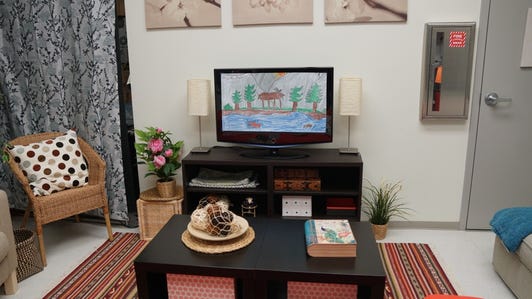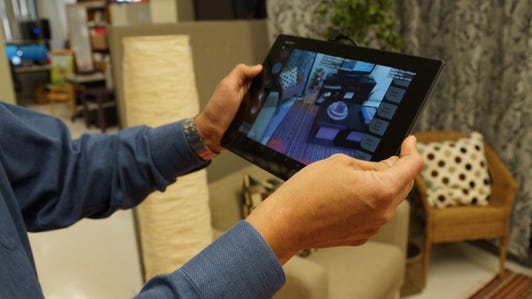
Ben Fox Rubin/CNET
BARCELONA — The smartphone of the future may anticipate a user’s needs before he even prompts the device and utilize behavioral analysis to make itself more secure.
Those are two potential features of Qualcomm’s new “cognitive computing” platform, called Zeroth, which is a combination of hardware and software that could create far more intuitive smartphones.
“It’s a learning phone which can personalize with time, and work better and better for you,” Raj Talluri, a Qualcomm products executive, said in an interview Monday, though he cautioned that the first products using Zeroth will likely have simpler functions.
The new platform — which has been in development for years — was also a way for Qualcomm to reveal its newest top-end smartphone chip, the Snapdragon 820, which will be designed to work with the platform. Device makers won’t get to start sampling the 820 until the second half of this year, so it’s unlikely phones using this new chip or Zeroth will arrive in 2015. Zeroth can be used in new phones with the 820, but a more basic version can also be added to current phones through a software update.
Separately, Qualcomm also unveiled a new ultrasonic 3D fingerprint reading technology called Sense ID that lets a smartphone scan a print through cover glass, aluminum, stainless steel or sapphire. The new feature could give device makers more flexibility in creating smartphones without home buttons.
Before new camera tricks land on phones, they start here (pictures)






+17 more
The Zeroth platform is among a handful of efforts from chipmakers to add more computer learning into devices to allow them to understand and process the world around them. For example, graphics chipmaker Nvidia in January revealed its new Tegra X1 chip, which could be used to help create self-driving cars.
For Qualcomm, Zeroth could become a way for it to differentiate itself against its competitors and allow it to come forward with new chips that don’t just offer boosts in performance from the year earlier, but wholly new ways of letting people interact with their phones.
Related stories
- Magnetic fields make wireless charging a whole lot cooler
- Listen up! Qualcomm’s ultrasonic 3D fingerprint scanner could one day give passwords the finger
- Your next-gen smartphone camera packs 3D heat
“I think it’s huge,” Talluri said. “I’ve never seen anybody run a deep-learning network of this complexity on a mobile phone.”
Qualcomm claims Zeroth can help people more naturally interact with their phones, allowing the devices to recognize gestures and faces, autonomously find the best wireless connection, or take instant actions after they recognize certain environmental sounds or speech.
At Qualcomm’s booth here at the Mobile World Congress, product manager Max Hamel showed off some of Zeroth’s capabilities. He scanned handwriting using a tablet’s camera, which the technology was able to immediately change to text. He also showed how another tablet’s camera can immediately recognize people’s faces, and scan pictures for specific images, like a beach, mountain or tree, then let users search their photos using those categories.


Ben Fox Rubin/CNET
Qualcomm hopes to use Zeroth beyond mobile devices, taking it into cars and wearables, as well.
For the 820, Qualcomm will go back to using its custom processors, running a new 64-bit CPU called Kryo. The Snapdragon 810, which Qualcomm just started selling, instead uses a more-generic licensed chip design from British chips firm ARM, which has made it a little harder for Qualcomm to stand out against its rivals in the mobile chips world this year. Samsung’s new Galaxy S6 and S6 Edge use its own Exynos platform, rather than the Snapdragon 810 chips that have powered previous models.
Updated, 9 a.m. PST: Added Qualcomm executive comments and additional details.


Now playing:
Watch this:
This supersonic fingerprint scanner maps your sweat pores
1:10



